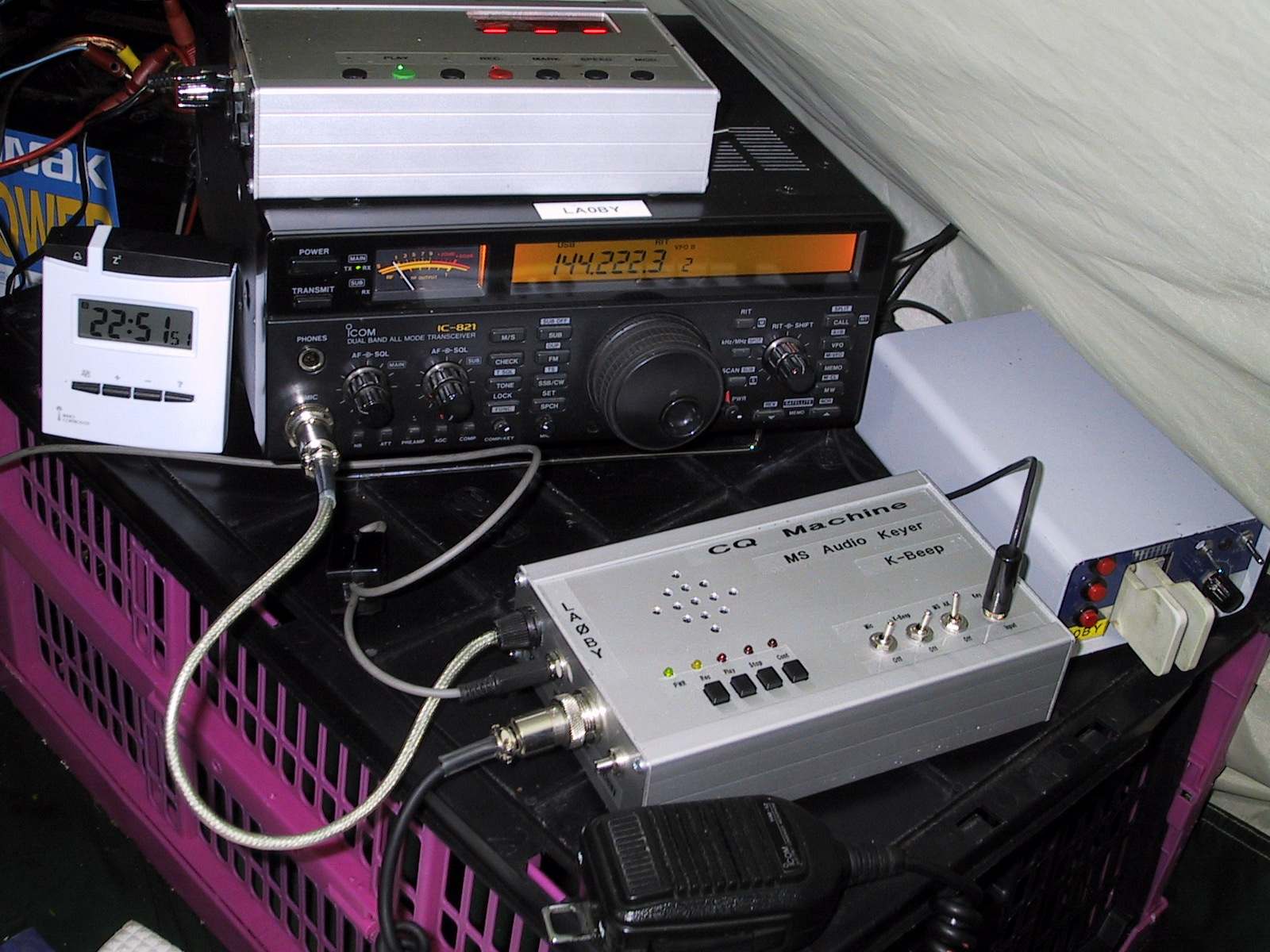Meteorscatter (MS) describes a propagation mode whereby the signal is reflected from rather small ionised patches in the E-region of the ionosphere. The ionisations are caused by meteors and have lifetimes from less than one second up to a few minutes. Radio amateurs regularly use MS for establishing contacts from under 600 km to over 2000 km on the frequency bands 50 MHz and 144 MHz.
On 144 MHz MS typically requires an antenna gain of at least 10 dBD and a RF output power of more than 100 W on both sides (but contacts have been made with much less power, too). On 50 MHz an antenna gain of 6 dBD and 10 W RF is often sufficient. The duration of the reflection is 9 times longer on 50 MHz as compared to 144 MHz.
Operating modes used for MS are high speed CW and SSB, for which the rate of success is very much dependant on the skills and experience of the operators. With the appearance of the WSJT program in 2002 a machine generated mode (MGM), FSK441, has become very popular. Its benefits are the combination of high data transmission rate, good sensitivity and ease of operation.
An essential piece of equipment for HSCW is a multi-speed tape recorder, required to decode high speed keying. Mechanical recorders, like UHER band machines or modified cassette tape recorders, were traditionally employed for this purpose. Since a few years a digital tape recorder (DTR) is available from DF7KF, offering smaller size, higher reliability and much more flexibility than ordinary tape recorders. This device is really recommendable! Otherwise also a PC with the appropriate HSCW coding and decoding software (e.g. by 9A4GL) may be used.
Tests are sometimes prearranged by e-mail or on chat-rooms (e.g. the ON4KST-chat), as many radio amateurs with MS capabilities can be contacted by Internet. Many stations also simply call and listen on the frequencies assigned for random (unscheduled) operation. Those are 144.100 MHz for CW, 144.200 MHz for SSB and 144,370 MHz for FSK441.
The IARU Region 1 Meteorscatter Operating Procedure describes how MS attempts are conducted and which information must be exchanged for a valid contact. During major showers like the Perseids, SSB is probably the most efficient mode - provided you use the right SSB procedure. A good example for efficient SSB is this long burst recorded by DF2ZC on 12.8.2001 during the Perseid meteor shower, during which I made 5 complete contacts. Nevertheless, the overwhelming majority of contacts nowadays is done in FSK441 using the WSJT software. It is just too convenient and requires a minimum of experience.
Software, DXpedition announcements and other information on MS can be obtained through the Make More Miles on VHF (MMMonVHF) website which was initially started by DK3XT. It also contains references to scientific sources and a great amount of other related links. It simply is "the forum" for Meteorscatter.
Information on DXpeditions can also be found at the VUSHF-Expedition Page provided by OZ2M.
OH5IY has developed the MS-Soft program, which computes the shower efficiency between two locations and the time of maximum for almost any meteor shower. It also provides a scheduler and enables high-speed keying from the PC. It can be downloaded from OH5IY's website. Another useful tool is the Virgo Website by DL1DBC.
Contests
The Bavarian Contest Club (BCC) organizes every year an MS contest during the Geminid-shower (around December 13). Only random contacts count and most points are achieved by applying the "letter-system", a special calling procedure. Be sure not to miss this contest, it's lots of fun! You find the rules at the BCC website.
Since 2008 the MMMonVHF Team and DUBUS organize the MS-Sprint Contest during the peak of the Perseid shower (around August 12). During the Perseids there is lots of activity anyway, but the contest may represent an additional attraction to those that have worked "all".
